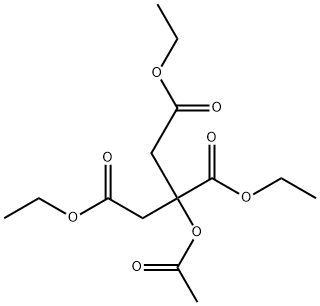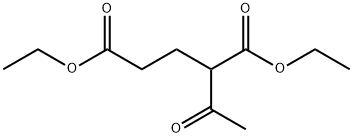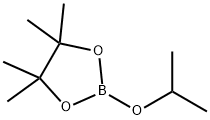Ethyl acetohydroxamate
Synonym(s):Ethyl N-hydroxyacetimidate;Ethyl acetohydroximate
- CAS NO.:10576-12-2
- Empirical Formula: C4H9NO2
- Molecular Weight: 103.12
- MDL number: MFCD00002114
- EINECS: 234-165-7
- SAFETY DATA SHEET (SDS)
- Update Date: 2025-09-25 17:15:13

What is Ethyl acetohydroxamate?
Chemical properties
clear colorless liquid after melting
The Uses of Ethyl acetohydroxamate
Ethyl acetohydroxamate was used in the synthesis of:
- O-acyl-and O-nitrophenylhydroxylamines
- hydroxamic acid ethoxycarbonylhydrazides
- ethyl O-(2,4-dinitrophenyl)acetohydroxamate
The Uses of Ethyl acetohydroxamate
Ethyl N-hydroxyacetimidate was used in the synthesis of O-acyl-and O-nitrophenylhydroxylamines, hydroxamic acid ethoxycarbonylhydrazides and ethyl O-(2,4-dinitrophenyl)acetohydroxamate.
What are the applications of Application
Ethyl acetohydroxamate is a useful chemical for synthesis of O-acyl-and O-nitrophenylhydroxylamines among other chemicals
Synthesis Reference(s)
Synthesis, p. 220, 1983 DOI: 10.1055/s-1983-30288
Flammability and Explosibility
Flammable
Properties of Ethyl acetohydroxamate
| Melting point: | 23-25 °C (lit.) |
| Boiling point: | 55-58 °C/6 mmHg (lit.) |
| Density | 1.1602 (rough estimate) |
| vapor pressure | 33.7Pa at 25℃ |
| refractive index | n |
| Flash point: | 170 °F |
| storage temp. | 2-8°C |
| form | Liquid After Melting |
| pka | 14.20±0.10(Predicted) |
| color | Clear colorless |
| Water Solubility | may decompose |
| Sensitive | Moisture Sensitive |
| BRN | 1700260 |
| CAS DataBase Reference | 10576-12-2(CAS DataBase Reference) |
| EPA Substance Registry System | Ethanimidic acid, N-hydroxy-, ethyl ester (10576-12-2) |
Safety information for Ethyl acetohydroxamate
| Signal word | Warning |
| Pictogram(s) |
 Flame Flammables GHS02  Exclamation Mark Irritant GHS07 |
| GHS Hazard Statements |
H226:Flammable liquids H227:Flammable liquids H315:Skin corrosion/irritation H319:Serious eye damage/eye irritation H335:Specific target organ toxicity, single exposure;Respiratory tract irritation |
| Precautionary Statement Codes |
P261:Avoid breathing dust/fume/gas/mist/vapours/spray. P264:Wash hands thoroughly after handling. P264:Wash skin thouroughly after handling. P280:Wear protective gloves/protective clothing/eye protection/face protection. P305+P351+P338:IF IN EYES: Rinse cautiously with water for several minutes. Remove contact lenses, if present and easy to do. Continuerinsing. P405:Store locked up. |
Computed Descriptors for Ethyl acetohydroxamate
New Products
4,4-Difluoropiperidine hydrochloride tert-butyl 9-methoxy-3-azaspiro[5.5]undecane-3-carboxylate Indole Methyl Resin N-Isopropylurea N,N-Dicyclohexylcarbodiimide(DCC) MELDRUMS ACID 5-METHYLISOXAZOLE-4-CARBOXYLIC ACID Magnessium Bis glycinate Zinc ascorbate 1-bromo-2-butyne 2-acetamidophenol 9(10H)-anthracenone Erythrosin B, 4-Piperidinopiperidine 2-((4-morpholinophenylamino) (methylthio) methylene) malononitrile 2,4-dihydroxybenzaldehyde 3-(4-morpholinophenylamino)-5-amino-1H-pyrazole-4-carbonitrile Methyl 2-methylquinoline-6-carboxylate 2,6-dichloro-4-nitropyridine 4-Bromo-2-chlorobenzonitrile 2-(benzylamino)acetic acid hydrochloride 4-(tert-Butoxycarbonylamino)but- 2-ynoic acid 3,4-dihydro-2H-benzo[b][1,4]dioxepine 1-Phenyl-1-cycloprppanecarboxylicacidRelated products of tetrahydrofuran






![[1-(Ethoxycarbonyl)ethyl]triphenylphosphonium bromide](https://img.chemicalbook.in/CAS/GIF/30018-16-7.gif)

You may like
-
 Ethyl acetohydroximate 96% CAS 10576-12-2View Details
Ethyl acetohydroximate 96% CAS 10576-12-2View Details
10576-12-2 -
 Ethyl Acetohydroximate CAS 10576-12-2View Details
Ethyl Acetohydroximate CAS 10576-12-2View Details
10576-12-2 -
 Ethyl acetohydroxamate CAS 10576-12-2View Details
Ethyl acetohydroxamate CAS 10576-12-2View Details
10576-12-2 -
 3-(4-amino-1-oxoisoindolin-2-yl)-1-methylpiperidine-2,6-dione 98%View Details
3-(4-amino-1-oxoisoindolin-2-yl)-1-methylpiperidine-2,6-dione 98%View Details -
 20677-73-0 (2,2-diethoxyethyl)methylamine 98%View Details
20677-73-0 (2,2-diethoxyethyl)methylamine 98%View Details
20677-73-0 -
 3-(4-(hydroxyamino)-1-oxoisoindolin-2-yl)piperidine-2,6-dione 98%View Details
3-(4-(hydroxyamino)-1-oxoisoindolin-2-yl)piperidine-2,6-dione 98%View Details -
 57381-49-4 2-bromo-4-chlorobenzonitrile 98%View Details
57381-49-4 2-bromo-4-chlorobenzonitrile 98%View Details
57381-49-4 -
 4,6-dichloropyrimidine-5-carbaldehyde 98%View Details
4,6-dichloropyrimidine-5-carbaldehyde 98%View Details
5305-40-8
Statement: All products displayed on this website are only used for non medical purposes such as industrial applications or scientific research, and cannot be used for clinical diagnosis or treatment of humans or animals. They are not medicinal or edible.
